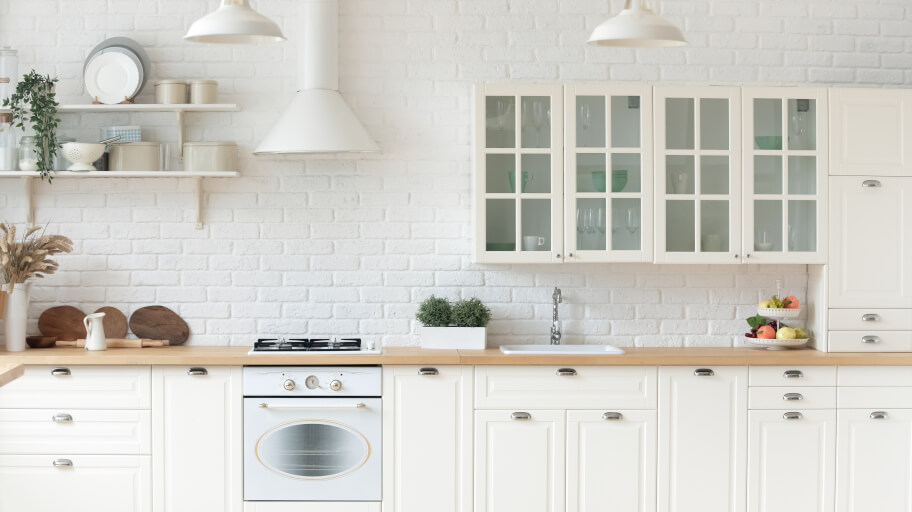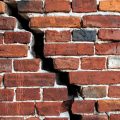
Whitewash paint has been used as a protective and decorative coating for more than five centuries. Despite numerous modern alternatives, whitewash remains popular today both in Australia and worldwide. There are lots of reasons for this. Whitewashing is quick and budget-friendly, and since the effect depends on rustic charm rather than sophisticated precision, you don’t need to be an expert decorator to create an attractive whitewash paint look.
What is whitewash paint?
Traditional whitewash is the great-grandfather of modern paint. It’s made of just three ingredients; lime, salt and water. This sort of whitewash is antibacterial, prevents the growth of mould and mildew, and repels insects. Used externally, it protects against the weather while allowing surfaces to breathe; used internally, it gives a bright finish that sanitises and also looks somewhat weathered, rustic and vintage.
So, whitewash vs paint – what are the main differences?
On one hand, whitewash has the advantage of being inexpensive and, being composed of just a few natural ingredients, it is both eco-friendly and non-toxic. The vintage look created on wood, stone or furniture has a decorative feel that appeals to current tastes. The downside is that whitewash needs to be finished with a protective coat.
Most modern paints, on the other hand, contain far more chemicals, including harmful VOCs. Paint gives a thicker coating that conceals rather than highlights woodgrain or stone textures. The advantage of paint is that it doesn’t need to be finished with a protective coating.
However, whitewash can also be created by diluting modern white paint. If this appeals to you, you might be wondering what kind to use. It depends on the effect you want to create.
Latex, water-based paints are commonly used to create whitewash, but acrylic paint is also an option. While not as chemical-free as a traditional whitewash, this modern alternative can give a tougher finish, so it’s considered by some to be more suitable for frequently used furniture.
How to make whitewash paint
You can make whitewash paint for furniture using easy to source, inexpensive ingredients. Better yet, DIY whitewash is multipurpose, so you can use the same paint formula whether you want to work on walls, wooden floors, or just about any other surface where you want to apply a bright and clean coating.
Below, you’ll find instructions on how to mix whitewash paint using lime, and how to prepare whitewash from conventional paints.
Whitewash paint recipe with lime
Traditional whitewash only uses three ingredients, two of which you probably already have in your home. You’ll also need a few tools and some basic safety equipment.
What you will need:
- Salt
- Water
- Hydrated lime, also known as masonry lime (NOT garden lime which is a different thing)
- A large bucket
- Gloves
- Goggles
- A stick for stirring
How to mix:
Before you start your whitewash paint mixture, put on your gloves and goggles. Lime whitewash is non-toxic but you don’t want to get the hydrated lime powder on your hands or in your eyes.
- Add two cups of salt to a gallon of warm water and mix well.
- Add 6 to 8 cups of hydrated lime to the saltwater mix and stir.
- More lime will give a thicker limewash and a heavier coating, but whitewash is always much thinner than conventional paint.
- Test your mix on a hidden area of the surface you’re painting. Once dry, decide if you’re happy with the covering or want it to be lighter or thicker.
- Adjust your mix by adding more lime or more water and retest until you’re happy with the effect.
Whitewash mixture with white paint
You can make whitewash paint for wood using either water, chemical or oil-based paints. The instructions on how to make whitewash from white paint are almost identical either way. The only major difference is that for water-based paint like latex, you use water to dilute the paint; if you’re using chemical-based acrylic or oil-based paint, add turpentine or paint thinner.
One advantage of using paint over lime whitewash is that you don’t have to stick to white. There’s a full palette of colours available, and the mixing and usage instructions are exactly the same. Of course, strictly speaking, at this point you’re not whitewashing but colourwashing!
Here’s how to make whitewash using latex, acrylic or oil-based paint:
What you will need:
- Gloves and goggles
- Large bucket and stirring stick
- Water for latex paint, turpentine or paint thinner for acrylic or oil-based paints
How to mix:
- Put paint in the bucket.
- Add your dilutant and mix at a 1:1 ratio.
- Test your mix on an inconspicuous area of the surface you want to paint and allow it to dry.
- If the coating is thicker than you want, add more thinner to the mix and retest (keep note of the ratios).
- Repeat until you’ve achieved the effect you’re looking for and make a note of the mix for next time you decide to whitewash.
Simple whitewash painting technique for furniture
Now you’ve prepared your mix, you need to know what to do with it. While it’s possible to whitewash a wide range of surfaces, it’s most commonly used for giving an interesting finish to furnishings. There’s more than one whitewash paint technique but here we’ll concentrate specifically on how to whitewash furniture. Whitewashing with chalk paint is similar to using latex paint; however, when working with chalk paint, it’s less important to prepare the wood and especially important that you seal your painted furniture.
What you will need:
- Mixed whitewash
- A brush or roller (brush is recommended)
- A sander or sanding block and sandpaper
- A spray bottle containing your dilutant (water, turpentine or paint thinner)
- Damp rags
- Gloves and goggles (especially important if you’ll be spraying turpentine or paint thinner)
- Sealent – wax or water-based varnish
And now let’s see how to whitewash wood with paint step-by-step.
1. Prepare the wood
Use a power sander or block and sandpaper to remove old paint finishes and smooth the wood. It’s not necessary to remove all the paint or work until the wood is perfectly smooth. One of the major appeals of whitewash is the ‘done by hand’ crafty feel and sometimes the interest lies in the imperfections.
2. Apply the whitewash
Unless the wood is perfectly smooth, this is best done with a brush. Work in long, smooth strokes, working the paint into cracks if required. Whitewash dries quickly, so it’s best to work on smaller areas at a time. If some areas are looking too thickly covered, you can wipe away the excess whitewash with a damp rag. If the mix looks lumpy, spray with your dilutant and smooth out the paint with the brush.
3. Leave to dry and decide if you want another coat
Apply as many coats as you want to. Leave several hours between coats to ensure the whitewash has dried fully. If some areas are too heavily covered, you can sand them out to lighten them. Once you’re happy with the level of cover, you’re ready to seal the finish.
4. Apply wax or varnish according to the manufacturer’s instructions
Oil-based varnishes may start to look yellow over time, so to ensure your whitewashed furniture maintains a clean and bright look, it’s best to stick to wax or a water-based varnish.
Can you whitewash over painted furniture?
If you’re working with a piece of already painted furniture, it’s understandable that you may not want to spend hours sanding its surface. So, you’d probably ask, can you whitewash over paint? The answer is yes but there are some things to be aware of.
There are two advantages to applying whitewash over paint; the first is that you’ll save time, and the second is that a coloured paint beneath a whitewash can create an interesting and attractive effect.
However, it is also good to keep the following specifics in mind before you decide on using this method:
- If the paint is flakey to start with, you risk losing the paint and the whitewash – at the very least, sand until the existing finish is sound.
- A heavy paint covering will detract from the attractiveness of a whitewash effect which relies on displaying and enhancing the woodgrain.
- If the existing paint is dirty or oily your whitewash won’t take – provide a clean surface by washing the furniture with paint cleaner or white vinegar.
Takeaways
- Applying whitewash is a simple, eco-friendly, non-toxic and low budget way to protect surfaces and bring new life to old furniture.
- Whitewash can be prepared at home using lime, salt and water, or by mixing modern paint with water or solvents.
- Much of the appeal of the whitewash effect lies in its homely rustic feel, so you don’t have to be an expert to try it out. Still, if you don’t have the spare time to try out whitewash painting, then get a painting expert to do the job and you can just enjoy the results.
Doing it yourself isn't your style?
Fantastic Handyman will take care of the painting and decorating!
You can book our handyman services in Melbourne, Sydney, Brisbane and Perth!


